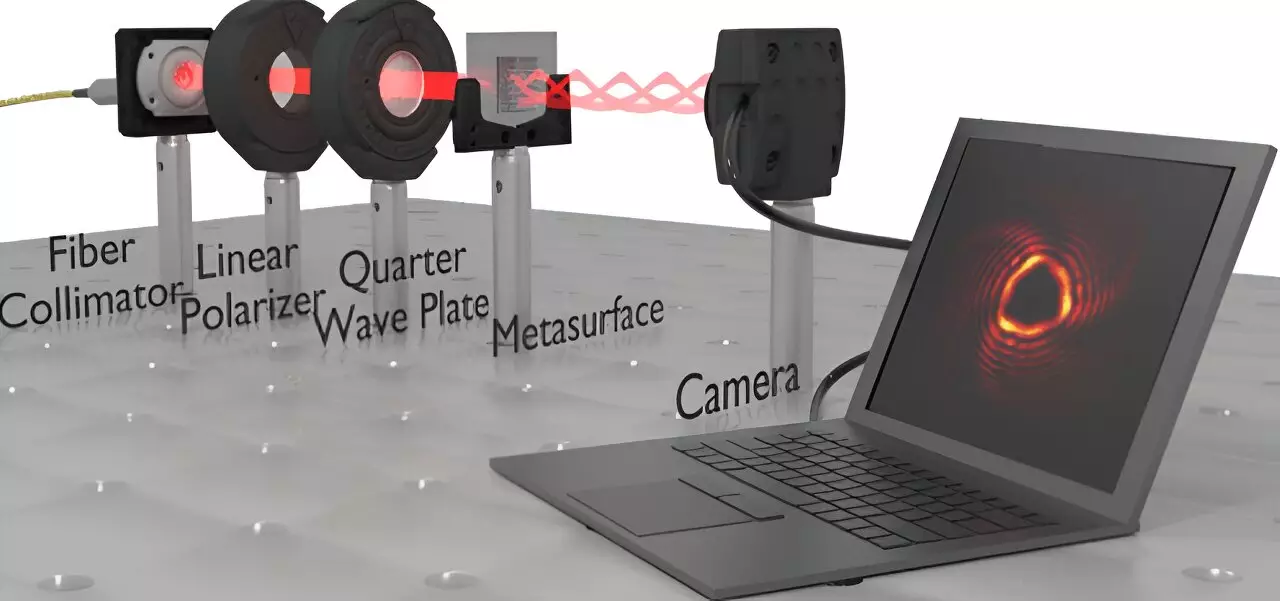In a groundbreaking achievement, researchers from the ARC Center of Excellence for Transformative Meta-Optical Systems (TMOS) have ventured into the realm of advanced optical manipulation with the development of metasurface-enabled tractor beams. Aimed at pulling particles through light, this concept draws inspiration from the fictional technologies of science fiction but is gradually morphing into reality. Their findings, published in ACS Photonics, spotlight an innovative approach that could potentially transform medical procedures and other industries.
From Science Fiction to Pragmatic Technology
The allure of tractor beams has long captivated the imagination, to the extent that sci-fi enthusiasts often dream about their applications in real-world scenarios. Historically, the generation of solenoid beams—structures of light capable of drawing materials towards them—has depended on cumbersome systems such as special light modulators (SLMs), which, due to their complex mechanics and size, remain impractical for portable technology. The researchers at the University of Melbourne have circumvented these limitations by employing a silicon metasurface that is incredibly thin, measuring approximately 1/2000 of a millimeter. This innovation hints at a future where lightweight, effective optical tools can revolutionize fields such as biotechnology.
Enhanced Efficiency Through Sophisticated Design
The creation of this metasurface hinged on mapping a phase hologram of the desired beam, leading to a highly specialized pattern crafted from silicon via advanced techniques like electron beam lithography and reactive ion etching. This meticulously engineered metasurface is the backbone of the experiment, facilitating the transformation of a conventional Gaussian beam into a solenoid beam with impressive efficiency. Remarkably, the study reports that about 76% of the input beam is converted into a desirable solenoid beam, edging away from the unconverted light and allowing for unobstructed manipulation.
Future Applications: A Leap in Non-Invasive Techniques
One of the most thrilling prospects of this technology lies in its application to non-invasive medical procedures. Traditional biopsy methods often pose risks of trauma to surrounding tissues, a concern that could be mitigated by using solenoid beams. Maryam Setareh, the lead researcher, emphasizes the potential of their compact and efficient device, forecasting a myriad of innovative applications that could emerge as the technology matures. As the world gradually strives for less invasive surgical techniques, the promise embodied in these tractor beams serves as a beacon of hope for patients seeking safer alternatives.
The Intersection of Light, Innovation, and the Future
The implications of developing a more adaptable and efficient means of manipulating light cannot be overstated. As researchers continue to probe the possibilities allowed by metasurface technologies, we may be on the cusp of witnessing advancements that bridge the gap between imaginative fiction and practical reality. The TMOS team’s endeavor symbolizes a vital stride in optical engineering, heralding a future where science fiction-inspired technologies are not only tantalizing dreams but practical solutions to pressing challenges in multiple domains. As we expand our understanding of light manipulation, the excitement surrounding these advancements promises to invigorate both scientific inquiry and everyday life, ultimately enriching society at large.

